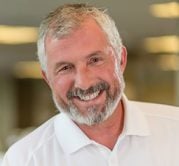5 insights from 10 years of project team alignment meetings

No doubt you have heard the well wore phrase “singing from the same sheet of music”. This is rightly one of the most used metaphors in the canon of project team alignment. Creating a team’s shared sense of purpose, common understanding of impact, and accountability for results gets your team aligned. It is a potent first step in achieving great project results and it does not happen by accident.
The real question is not about the value in aligning your team; most understand the power of clear, shared project goals. The question is how to get there. Over the past 10 years working with leading credit unions we have found that the process of creating great project results begins with helping teams align. Therefore, we start every project with this core challenge. Over time we have found a few consistent and surprisingly simple themes, and as a result, continue to deliver successful projects designed to meet unique needs for diverse institutions.
- In order to get on the same page, you have to have a page
How many times have you launched a project without a page? Virtually every Credit Union institution has a stated vision guiding strategic decisions. In the most successful institutions that vision is compelling and most importantly, helps teams translate goals into concrete daily work focused on objectives. Don’t deny your project the benefit of vision committed to paper. At Momentum we call this a Project Charter. Every alignment meeting produces one, even if only as a draft. It’s the crisp, clear statement of purpose that empowers the project leaders, drives progress, and helps your teams filter decisions large and small. The Project Charter communicates to all a clear understanding of why the organization is pursuing the project.
- Alignment is about pull, not push
A mentor and dear friend drove this point home recently when describing the magnetic power of purpose to pull teams into sustained alignment. Picture a grade school science experiment using a single magnet to pull together iron filings. Can you see it? Contrast this with a parking lot full of shopping carts and the effort necessary to slam them together and push them back to the front of the store. Successful projects begin with a clear purpose that pulls team members towards a common objective. They are not solely driven by the individual requirements of project team members. Read More
- Structure amplifies creativity
Many believe that creativity needs space to blossom. An unrepentant frolic in and out of the rabbit holes of possibility is the only true path to creative breakthrough. While it’s true that iterative process involves a certain amount of exploration, some experts believe up to 35% of project time is spent on rework. The reality of high performing teams, especially ones with limited time, finite budgets, and defined expectations, is that there is little patience for rework. A well-aligned project team will structure enough space for the creative process in the early project phase such that future decisions can be treated with discipline and based on concrete project requirements. This helps to keep projects from being derailed by mistimed exploration.
- Diversity is an X Factor
A brilliant group of MIT organizational experts used body-worn sensors to gather data on project teams. Surprisingly the most consistent predictor of success, up to 94%, is not what is communicated, but how, and furthermore, the more diverse the team’s interaction, the more successful. When communication is disproportionately focused on limited team members the results are consistently less effective.
The correlation between team diversity and results is extensive. For example, Stanford University student engineering design teams consistently win more often when team diversity is a component of team composition. The value credit unions achieve through involving multiple levels of staff with varied backgrounds in the project alignment process cannot be overstated. Incorporating many diverse viewpoints is empowering to the team and leads to richer, more well thought-out delivery strategies; just what is needed to give your project the edge necessary to carve out exceptional results.
- Place is powerful! Draw from your “local” to build a relevant member experience
Smart money will anchor long-term branch transformation in a design prototype. While the advantages of a prototype are many, the most compelling and durable may be that it can repeatedly translate your story into experience in a relevant way. Your members, like all of us, face a barrage of brands screaming for attention every day. Additionally, according to the website Trendwatchers.com, brand experiences increasingly delivered through the lens of a few mega-brands (think iPhone banking) are becoming democratized and diluted.
The ubiquitous access to everything all the time makes your place more special and perhaps more necessary than ever before. The alignment process is consistently an opportunity for teams to re-center a project towards what is unique about their organization, and how that can be made relevant to members and employees alike. This process can help a team resist the urge to jump on a stylistic bandwagon and instead choose to incorporate the unique story of their place.
Once aligned, teams will really produce. So, articulate purpose, it’s magnetic. Put great process behind your team to amp up their creativity. Celebrate the diversity of your institution and create a relevant member experience by telling your story drawn from your unique place.
I’d love to hear your thoughts. Wishing you a prosperous 2015!





